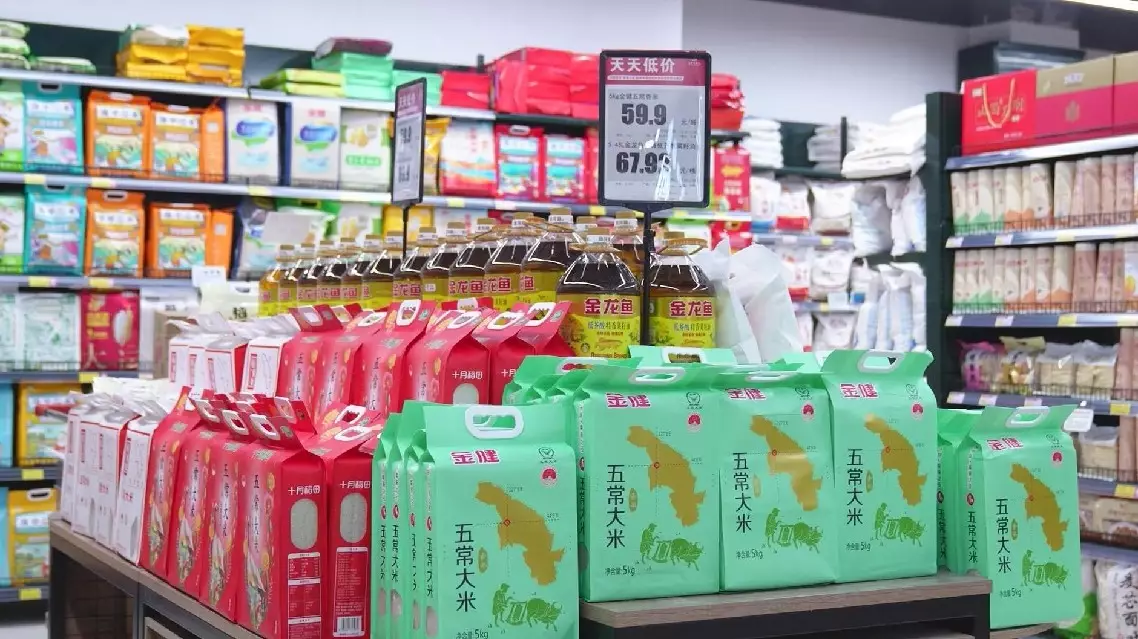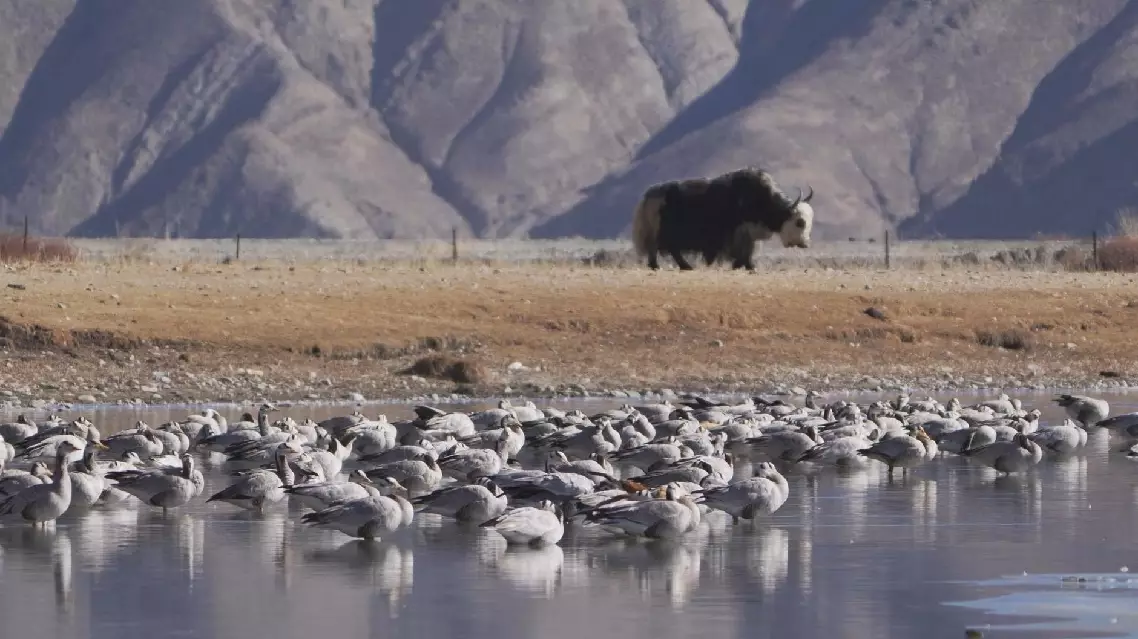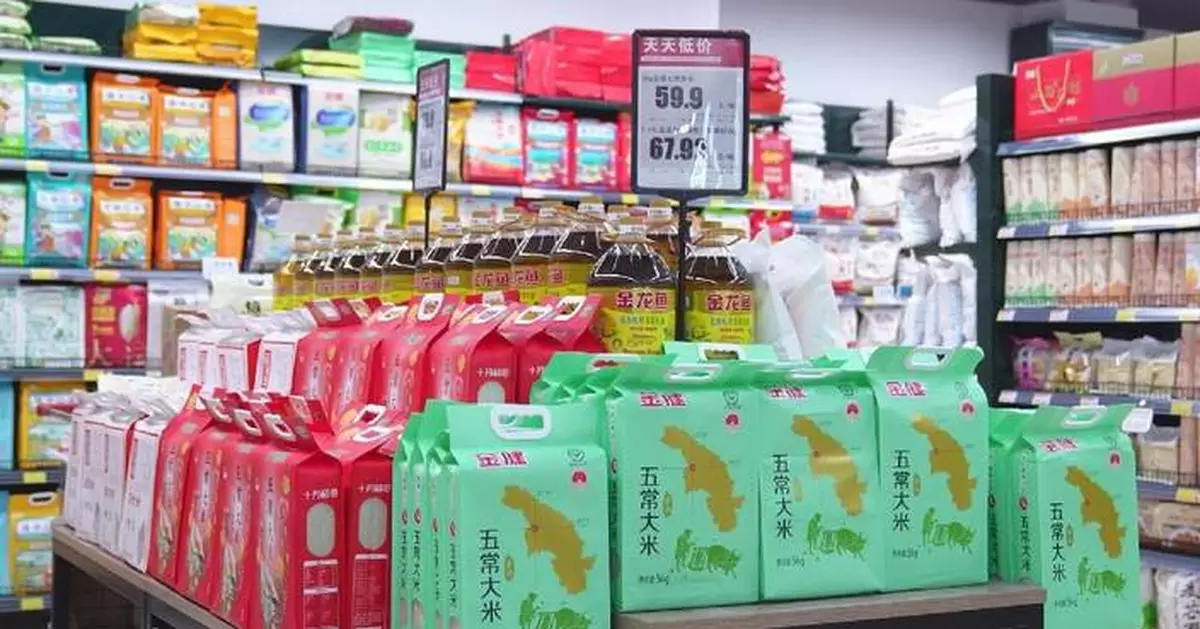Chinese authorities have taken various measures to ensure sufficient food supplies and stable food prices as Spring Festival, the most important traditional Chinese festival that usually sees surging consumer demand, is approaching.
In Luohe City of central China's Henan Province, large farmer's markets and supermarkets are stocked with a wide array of daily necessities and fresh vegetables, offering a comprehensive selection and ample supply.
A significant increase can be seen in the variety of rice, flour, and edible oil in supermarkets. Price tags are color-coded, with white tags indicating market prices, while yellow tags discounted prices. Any fluctuations in prices will be closely monitored.
"Prices are clearly marked and based on government guidelines. To ensure a steady supply, we have rice and flour supplies in stock 20 times the usual amount, and edible oil 30 times. Our supply vehicles will [deliver goods to] stores every day before 10:00, and the quality is guaranteed," said Zhang Sufang, a staff member at a local supermarket.
Meanwhile, there is growing attention to new market trends focusing on nutrition and health.
"We will ensure a sufficient supply and stable prices of grain and edible oil products, and maintain consistent market availability. We will actively adapt to the growing trend of nutrition and health consumption, support enterprises in increasing the supply of sought-after, high-quality new products with characteristics, accelerate the cultivation and promotion of whole grain products, so as to better meet the diverse, personalized, and customized consumption needs of consumers," said Luo Shouquan, director of the grain reserves department of the National Food and Strategic Reserves Administration.

China takes measures to ensure stable food supply, prices as Spring Festival approaches
Black-necked crane, a rare species under China's first-class national protection, has been living in harmony with local residents over the past years in their plateau paradise -- southwest China's Xizang Autonomous Region, thanks to the ecological conservation efforts made by local authorities and the care provided by the locals.
Every autumn, the village of Jianda in Shigatse City welcomes some distinguished guests -- over 1,000 black-necked cranes dressed in their elegant black-and-white "tuxedos".
Jianda is their exclusive "winter palace", where they are looked after by 75-year-old Tenzin. He has born witness to the village’s time-honored proud tradition of harmony with nature.
In this model of "human-crane cohabitation", the cranes stand guard as the farmers till their fields and they dance while the livestock graze on pasture. And in the golden glow of sunset, the village's chimneys puff out smoke to a chorus of crane calls, in celebration of a timeless pact between humans and birds.
Every year, when the wintering season ends and the cranes prepare to leave Jianda, Tenzin is always reluctant to part with his pets.
"They're leaving for Changtang [Plateau] again. I can't help but feel a bit reluctant to see them go," said Tenzin.
The black-necked crane, dubbed the "panda of birds", is the world's only crane species that breeds and lives on plateau. They mainly inhabit swamps, lakes, and floodplains at an altitude of 2,500 to 5,000 meters. In China, black-necked cranes are mainly distributed across the Qinghai-Xizang Plateau and the Yunnan Guizhou-Plateau.
Their food includes plant leaves, rhizomes and algae. The presence of the black-necked cranes is a sufficient indicator of the sound environment of the plateau wetland ecosystem.
Xizang has always prioritized eco-environmental conservation and kept reminding itself that conserving the ecology of the Qinghai-Xizang Plateau is the greatest contribution to the survival and development of the Chinese nation, said a white paper issued by the Chinese government in March.
The region is committed to maintaining harmony between humanity and nature in modernization. It also strives to continuously improve eco-environmental governance and protect biodiversity on the Qinghai-Xizang Plateau, according to the white paper.
Xizang has established 47 nature reserves of all kinds, covering 412,200 square kilometers. According to the second survey of terrestrial wild animals, there are 1,072 terrestrial wild vertebrate species and 246 wild animal species under special state protection in Xizang.

Black-necked cranes coexist peacefully with humans in their plateau paradise






















































